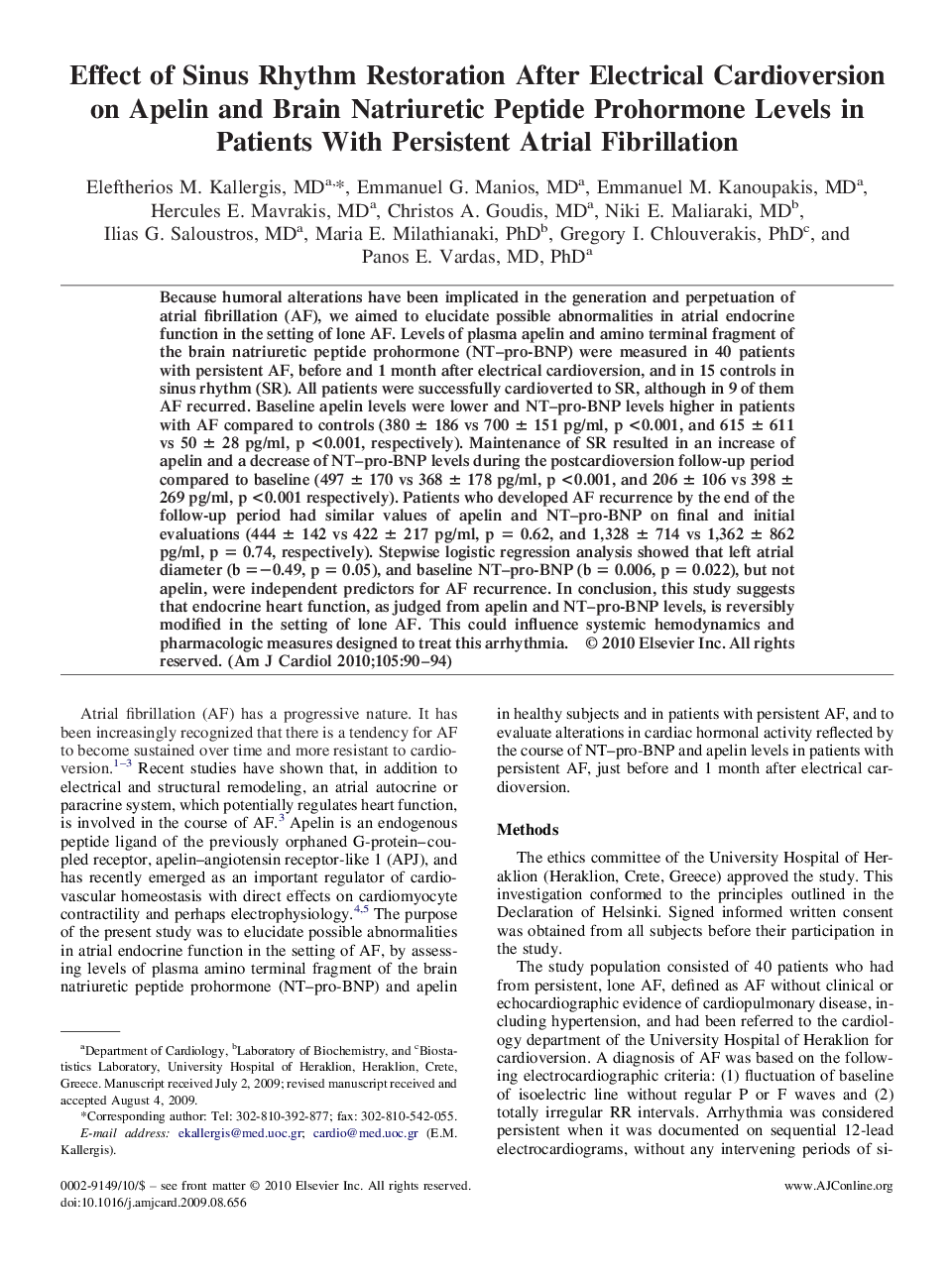| کد مقاله | کد نشریه | سال انتشار | مقاله انگلیسی | نسخه تمام متن |
|---|---|---|---|---|
| 2857598 | 1572282 | 2010 | 5 صفحه PDF | دانلود رایگان |

Because humoral alterations have been implicated in the generation and perpetuation of atrial fibrillation (AF), we aimed to elucidate possible abnormalities in atrial endocrine function in the setting of lone AF. Levels of plasma apelin and amino terminal fragment of the brain natriuretic peptide prohormone (NT–pro-BNP) were measured in 40 patients with persistent AF, before and 1 month after electrical cardioversion, and in 15 controls in sinus rhythm (SR). All patients were successfully cardioverted to SR, although in 9 of them AF recurred. Baseline apelin levels were lower and NT–pro-BNP levels higher in patients with AF compared to controls (380 ± 186 vs 700 ± 151 pg/ml, p <0.001, and 615 ± 611 vs 50 ± 28 pg/ml, p <0.001, respectively). Maintenance of SR resulted in an increase of apelin and a decrease of NT–pro-BNP levels during the postcardioversion follow-up period compared to baseline (497 ± 170 vs 368 ± 178 pg/ml, p <0.001, and 206 ± 106 vs 398 ± 269 pg/ml, p <0.001 respectively). Patients who developed AF recurrence by the end of the follow-up period had similar values of apelin and NT–pro-BNP on final and initial evaluations (444 ± 142 vs 422 ± 217 pg/ml, p = 0.62, and 1,328 ± 714 vs 1,362 ± 862 pg/ml, p = 0.74, respectively). Stepwise logistic regression analysis showed that left atrial diameter (b =−0.49, p = 0.05), and baseline NT–pro-BNP (b = 0.006, p = 0.022), but not apelin, were independent predictors for AF recurrence. In conclusion, this study suggests that endocrine heart function, as judged from apelin and NT–pro-BNP levels, is reversibly modified in the setting of lone AF. This could influence systemic hemodynamics and pharmacologic measures designed to treat this arrhythmia.
Journal: The American Journal of Cardiology - Volume 105, Issue 1, 1 January 2010, Pages 90–94